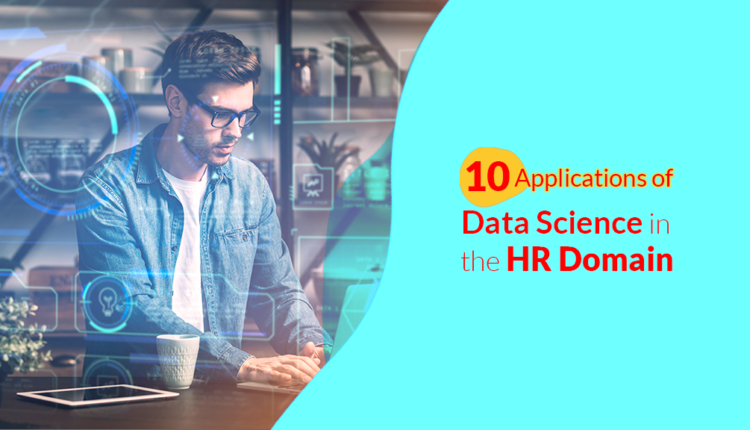HRTech Series cover the top HR Technology news and analysis from top HR tech categories
– HR automation, dashboards and employee experience.
HRTech Series covers contemporary and futuristic scenarios in the HR technology realm. We cover the emerging trends and latest developments in HR Technology via news, interviews and HR tech primers to stimulate greater interaction between HR teams and employees.
In the current era of generative AI and automation, HR realm is witnessing a sublime transformation. Modern organizations are evolving rapidly in order to accommodate human workforce and innovative data science technologies. According to a report published by WEF, every industrial sector has to fundamentally transform their operations and approach to talent management to set pace in the data economy. Making appropriate investments into talent acquisition and up-skilling in data science skills would ensure sustainable digital transformations across all sectors, including in HR and Business Process Management.
Data science has emerged as one of the most important and rapidly growing fields in recent years. It involves the use of various statistical and computational techniques to extract meaningful insights from data. The applications of data science are vast and varied, ranging from finance and healthcare to marketing and transportation. One area where data science has shown immense potential is the field of human resources (HR).
HR is an essential function of any organization, and it involves managing employees and ensuring that the organization meets its goals through the effective utilization of its human capital. In this article, we will discuss ten applications of data science in HR domain.
Recommended: HR Tech Interview With Chris Havrilla, Vice President, Product Strategy,Talent At Oracle
Understanding Data Science
Data science is the study of data in order to derive valuable business insights. It is a multifaceted approach to data analysis that integrates principles and practices from mathematics, statistics, artificial intelligence, and computer engineering. This analysis assists data scientists in asking and answering questions such as what occurred, why it occurred, what will occur, and what can be done with the information.
10 Applications of Data Science in the HR Domain
Data science has altered the HR industry by delivering improved analytical tools and approaches to HR professionals. Following are the ten applications of data science in HR domain.
1. Recruitment and Hiring
The value of data science in the talent acquisition space is immense. Recruiting and hiring the right employees is critical for any organization’s success. However, it can be a challenging task, especially when dealing with a large pool of candidates. Data science models allow hiring managers and recruiters to dynamically address the perennial challenges in skills mismatch, talent shortage, and pipeline development. With the right data science capabilities, recruiters can take actionable decisions to solve these issues in real time without falling short of the overall business deadlines.
Data science can help streamline the recruitment process by analyzing resumes, cover letters, and job applications. It can also help identify the most qualified candidates by using algorithms that assess skills, experience, and other factors.
2. Employee Retention
Keeping employees engaged and motivated is essential for retaining top talent. Data science can help identify factors that contribute to employee turnover, such as job satisfaction, salary, and benefits. By analyzing these factors, HR professionals can develop retention strategies that address employee concerns and improve overall job satisfaction.
3. Performance Management
Performance management involves setting goals, evaluating performance, and providing feedback to employees. Data science in HR can help automate this process by using algorithms to analyze performance data and identify areas for improvement. This can help HR professionals provide more accurate and objective feedback to employees and improve overall performance management.
4. Diversity and Inclusion
Diversity and inclusion are critical for creating a positive and inclusive workplace culture. Data science can help identify diversity and inclusion gaps within the organization by analyzing employee data such as gender, age, ethnicity, and job title. This can help HR professionals develop strategies to promote diversity and inclusion and create a more inclusive workplace.
5. Learning and Development
Continuous learning and development are essential for employees to stay competitive and meet the organization’s goals. Data science can help identify skill gaps and training needs by analyzing employee performance data. This can help HR professionals develop personalized training programs that address employee needs and improve overall performance.
Recommended: HR Tech Interview With Christopher Kenessey, Chief Executive Officer At AlertMedia
6. Compensation and Benefits
Compensation and benefits are crucial for attracting and retaining top talent. Data science can help identify market trends and employee preferences by analyzing compensation and benefits data. This can help HR professionals develop competitive compensation and benefits packages that attract and retain top talent.
7. Succession Planning
Succession planning involves identifying and developing employees who have the potential to take on leadership roles within the organization. Data science can help identify high-potential employees by analyzing performance data, employee feedback, and other factors. This can help HR professionals develop personalized development plans for high-potential employees and improve overall succession planning.
8. Employee Engagement
Employee engagement is critical for improving productivity and reducing turnover. Data science can help measure employee engagement by analyzing employee feedback, performance data, and other factors. This can help HR professionals identify areas for improvement and develop strategies to improve employee engagement and overall job satisfaction.
9. Workforce Planning
Workforce planning involves forecasting future workforce needs and identifying gaps in skills and capabilities. Data science can help identify workforce trends and predict future needs by analyzing employee data such as turnover rates, retirement rates, and hiring trends. This can help HR professionals develop workforce plans that align with the organization’s goals and reduce workforce gaps.
10. Workplace Safety
Workplace safety is critical for ensuring the well-being of employees and reducing liability for the organization. Data science can help identify safety risks by analyzing employee data such as injury rates and absenteeism. This can help HR professionals develop safety strategies that address potential risks and improve overall workplace safety.

